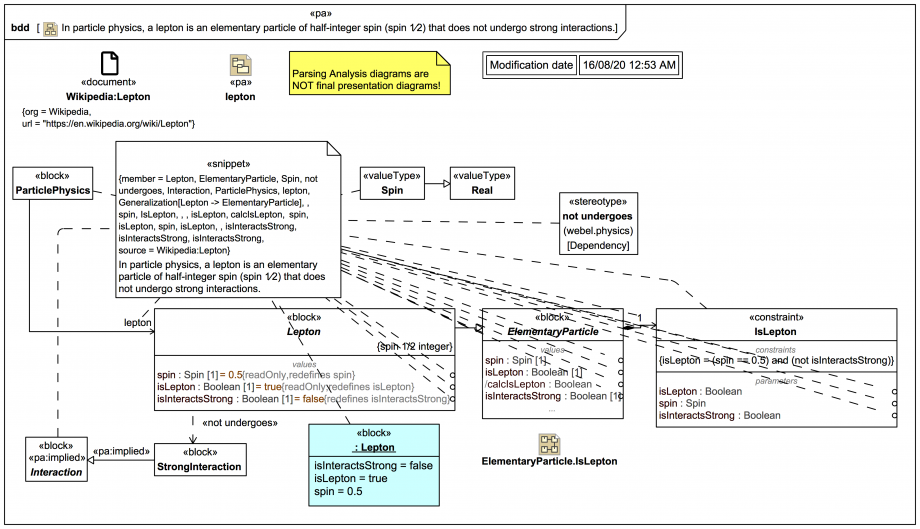Tags and keywords
There is clearly some kind of abstraction ElementaryParticle, of which a Lepton is a special case. So far, there are value properties for spin:Spin, isLepton:Boolean and a derived value property /calcIsLepton:Boolean. In the more specific Lepton class the spin:Spin has been redefined to be a readonly property with fixed default value 0.5, and the isLepton:Boolean is redefined to be a readonly property with fixed default value 'true'. These properties also have isLeaf set 'true' so they can't be further redefined.
The value property /calcIsLepton:Boolean is intended to be calculated in the context of any specific particle via a constraint declared on a constraint block IsLepton. We'll see next how this can be calculated using Magic Cyber-Systems Engineer ® (Cameo Systems Modeler®) or Magic Model Analyst® (Cameo Simulation Toolkit®) for an instance :Lepton.
We are told that a lepton 'does not undergo strong interactions'. This important concept is encapsulated as a custom stereotype keyword «not undergoes» applied to a Dependency. This may remind some readers of semantic triples in OWL and RDF. It is also represented as a value property isInteractsStrong:Boolean, which is redefined in Lepton to always be 'false'.
Presumably there are other types of interactions, not just strong interactions. Let's pretend for the moment we don't know that. To more formally indicate elicited elements that are not explicitly mentioned in the text of a source one can use a custom stereotype with a keyword like «pa:implied», where the 'pa' stands for Parsing Analysis. Some other similar keywords might include «pa:assumed». If this is clarified by another snippet, these keywords can then be removed.
The Parsing Analysis diagram is itself also stereotyped with «pa». This helps remind us that it is NOT a final presentation diagram and only serves as a temporary "scratchpad" for traceable elicitation of model elements.


